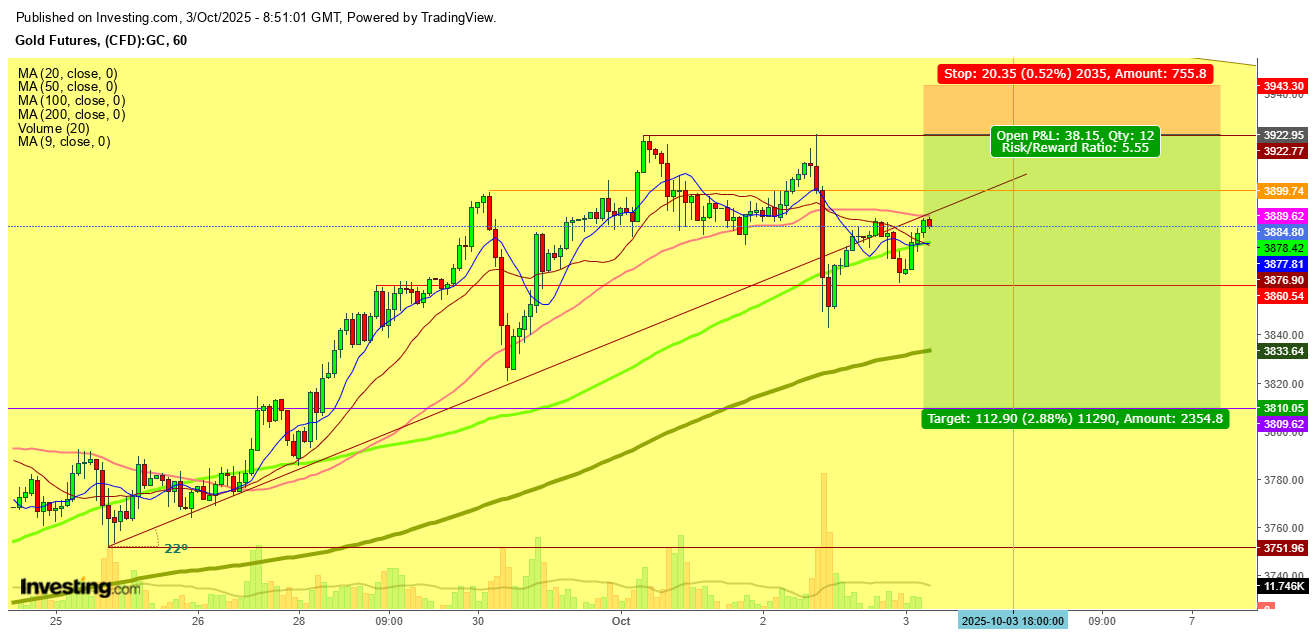NVIDIA expands Microsoft partnership with Blackwell GPUs for AI infrastructure
After reviewing the movements of the gold futures in the 1-Hour chart, I found that the gold futures muted after retesting the record high at $3922.77 on Aug. 1, 2025, and felt a surge in a selling spree despite the risks from the ongoing US government shutdown.

Undoubtedly, Optimism over artificial intelligence and more U.S. interest rate cuts kept the risk market largely frothy this week, with Wall Street indexes eking out a series of record highs. While gold also advanced, its gains were cut short by some weakening in haven demand.
After testing a record high on Oct. 1, 2025 at $3922.77, gold futures tried to sustain at the immediate support, and moved upward to test this recently tested record high once again on Oct. 2, 2025 but found a steep slide from there before testing a low at $3843.31 within three hours, trying again to move upward on October 3, 2025 but facing stiff resistance at the 50 DMA at $3889 in an hourly chart due to the formation of a bearish crossover as the 9 DMA and 20 DMA have already pierced the 50 DMA on Oct. 2, 2025, and trying to move even below the 100 DMA, ensuring the continuation of bearish pressure below a pivotal point at $3889.
I anticipate that if the gold futures don’t sustain above the immediate resistance at the 50 DMA at $3889, a selling spree could accelerate with their sustainable move below the 100 DMA at $3878.43, and a sustainable move below this could push the futures to test the next support at the 200 DMA at $3833.64.
Moreover, if the gold futures close this week below this significant support at the 200 DMA with some sustainable moves on an hourly chart, next week could experience a gap-down opening.
Inversely, if the gold futures move upward and sustain above the immediate resistance at $3899.74, big bears can load fresh shorts above the next resistance at $3922.77 with a Stop Loss at $3943.30 for a target at $3810.
Disclaimer: Readers are advised to take any position in gold at their own risk, as this analysis is based only on observations.
